Legendary amplifiers: "cold" lamps without a transformer, DIY-compilation, decades of torment with the class "D"
As I promised, we will continue the cycle of the legendary amplifiers of the past and present. This time we will describe the difficult fate of UHF class D, the original developments in the field of tube circuitry, we will not bypass the side and DIY kits for those whose hands have grown out of the body.

When creating the material, I tried to squeeze all the information valuable from the masterpieces of audiophile journalism, dry technical descriptions and publications of such comrades as Neil Gader, Harry Pearson, Robert Green. As in the previous material, I tried to find the main characteristics and schematic diagrams of these devices, as well as prices (at the time of production), which modern authors are often silent about.
We begin traditionally with the warmest in terms of tube epoch, from the 50s in the USA, where in the provincial city of New York, inventor Julius Futterman (Julius Futterman) developed one of the most original tube amplifiers of his time. In 1954, the lamp UMZCH Futterman H3 OTL was born, a feature of which was the absence of an output transformer.
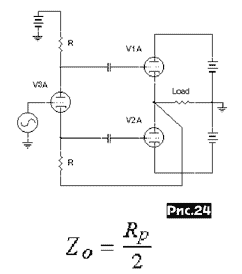
In the original circuit design of the Futterman amplifier, the phase inverter cathode resistor was connected not with ground, but with the amplifier output. The 100% OOS of the Futterman H3 OTL cathode follower was compensated for by a 100% PIC through the phase inverter cathode resistor. Interestingly, a scheme unique for that time (and highly appreciated by descendants) was developed not by a professional engineer, but by a self-taught radio amateur.
')
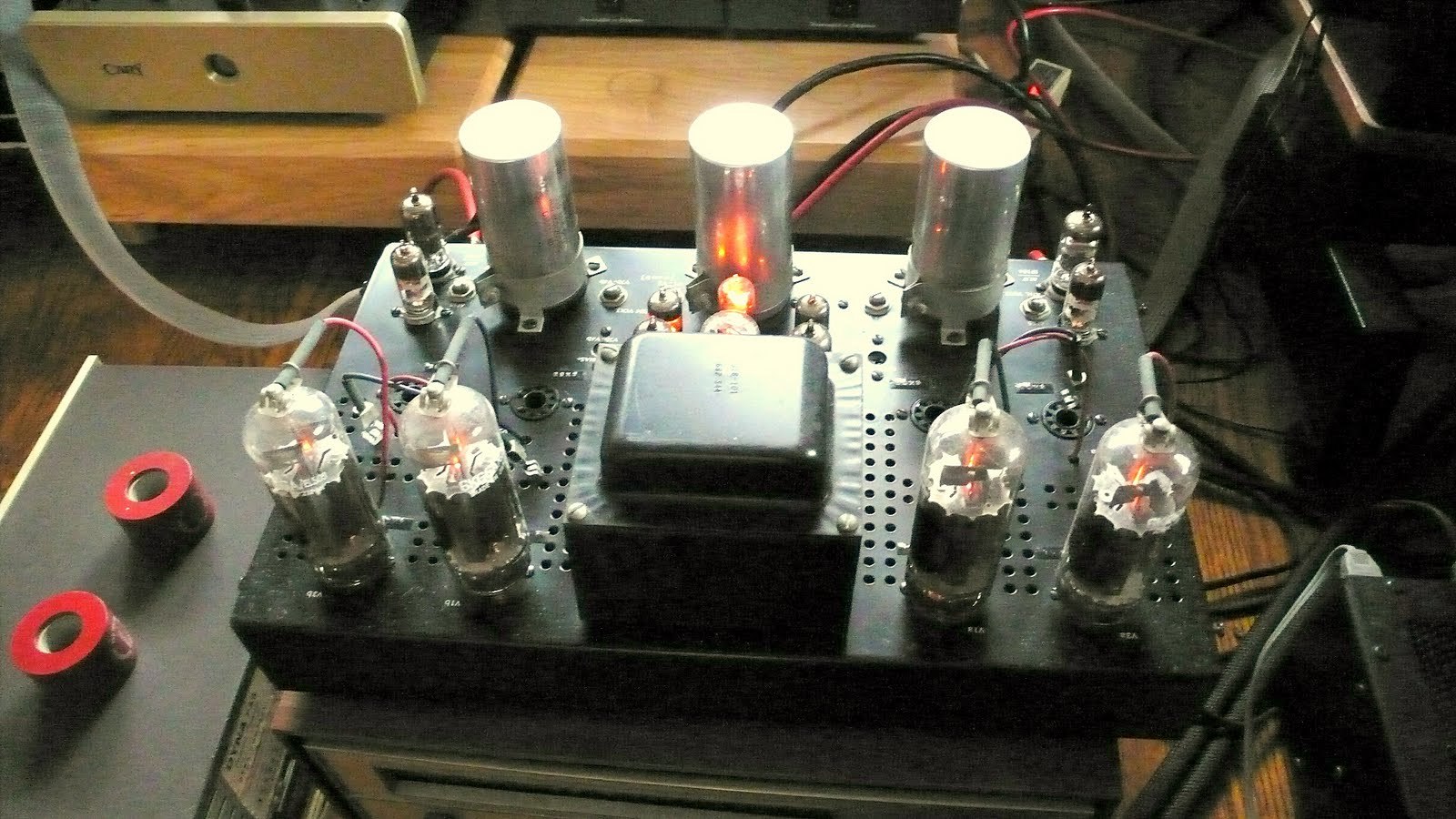
The reason for the need for the original solution was that about 30-35% of the cost of tube amplifiers of those years fell on the output transformer. That was an extremely significant factor, given that the first amplifiers were made by hand.
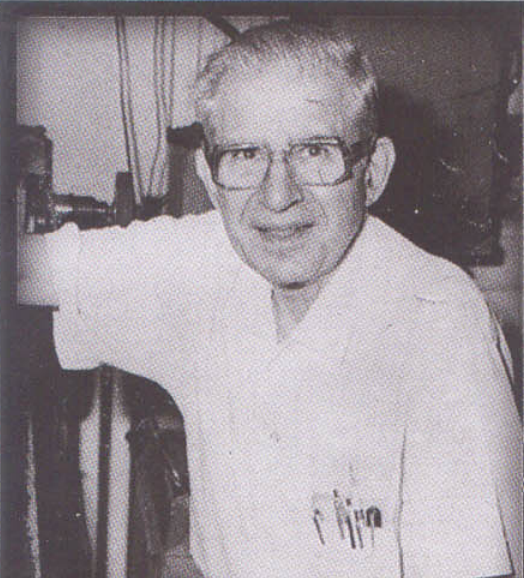
Thanks to the design solution, the price of the amplifier was slightly higher than the cost of self-assembly kits and amounted to about $ 180- $ 200, which today, taking into account inflation, is equivalent to $ 1,600 - 1,800. "Warm" color sound.
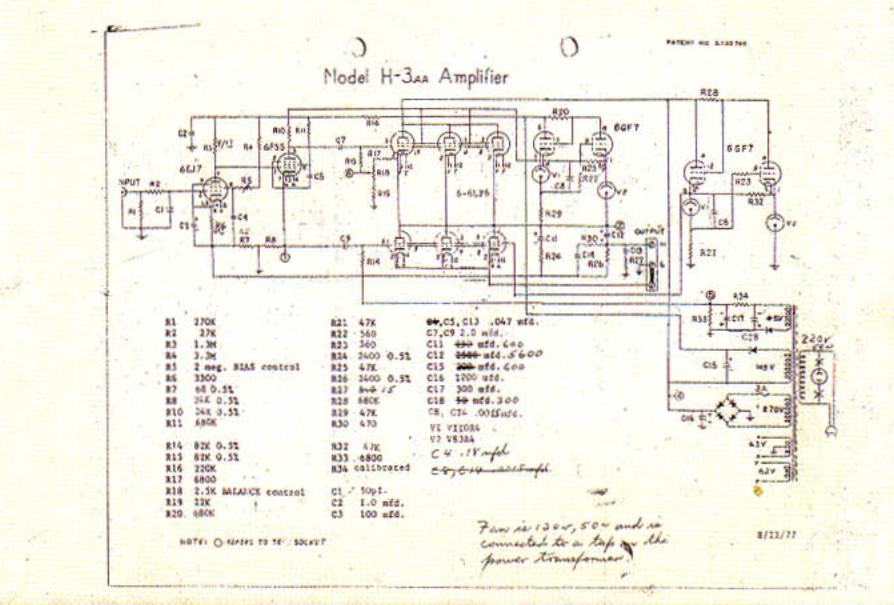
It should be noted that the comparatively low cost of the amplifier coexisted with almost unique characteristics of the time.
Judge for yourself:
Interestingly, the Quad ESL 57 electrostatic speakers created in 1957 were considered to be the ideal speaker system for working with this amplifier.
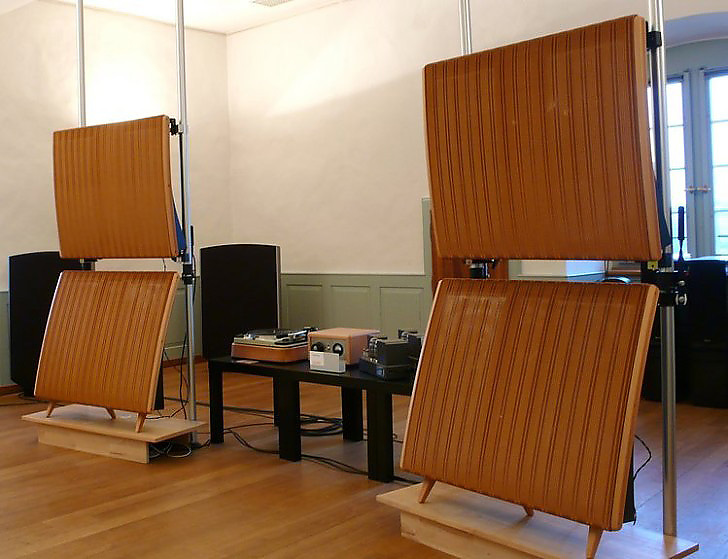
Futterman patented the device, and sold the licenses to several American companies in 1961. The license amplifiers according to the Futerman scheme were produced before the beginning of the 70s and were much more expensive than the original. During the 60s and 70s, the inventor improved circuit design of tube amplifiers.
In 1984, after Futerman's death, the New York Audio Labs company released, developed with his participation, one of the most expensive amplifiers of its time (for electrostatic speaker systems), costing $ 12,000 (about $ 26,000 today with inflation). Among the relatively recent developments that use Futtermann's legacy, we can single out the original device of the Italian Andrea Ziuffoli (the diagram is shown below).
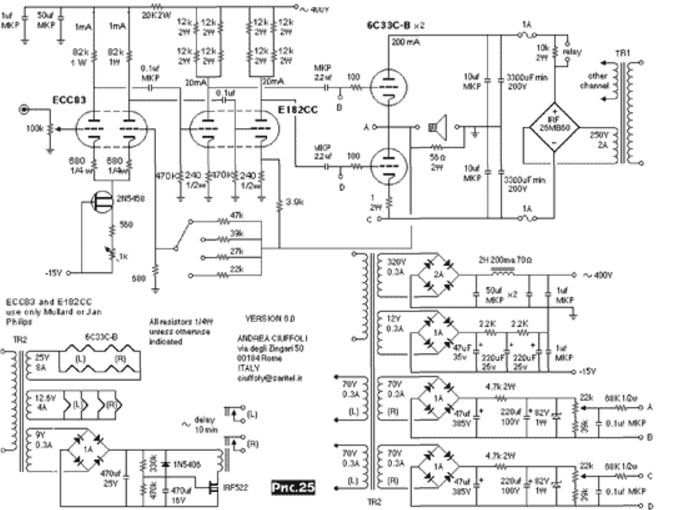
Heathkit - one of the foremost lamp designers for fans of rosin smoke. The company, founded in the 40s, gained popularity in the 60s, on a wave of interest in self-assembly of devices. Virtually all of the company's products have become iconic among DIY enthusiastic people. Unlike Dynaco, Heathkit created multipurpose designers, with different sets of chassis and radio components.

The kits and models were changed quite often, which also significantly discards these devices with the “mac for the poor.” The peak of popularity of Heathkit sets falls on the mid-60s, when the purchase of a high-quality amplifier assumed costs comparable to the cost of an average car.
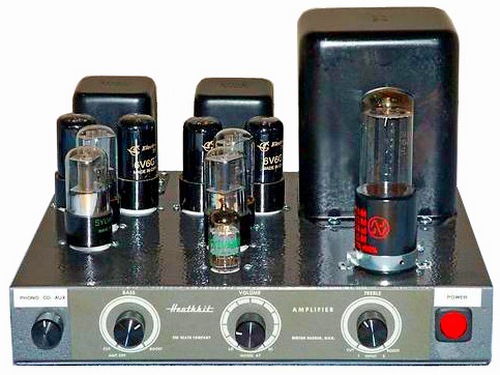
All wooden parts (a set of handles, chassis, etc.) were included in the basic package. Guitar heathkit variants sometimes suggested the inclusion of additional bonuses: emitters and body parts for creating combos. Interestingly, the company actively used transistor circuits to create guitar kits. This approach was not very popular in the 60s (the warm tube trend in guitar amplification was strong), but it allowed buying cheap guitar equipment to rather low-end novice musicians.
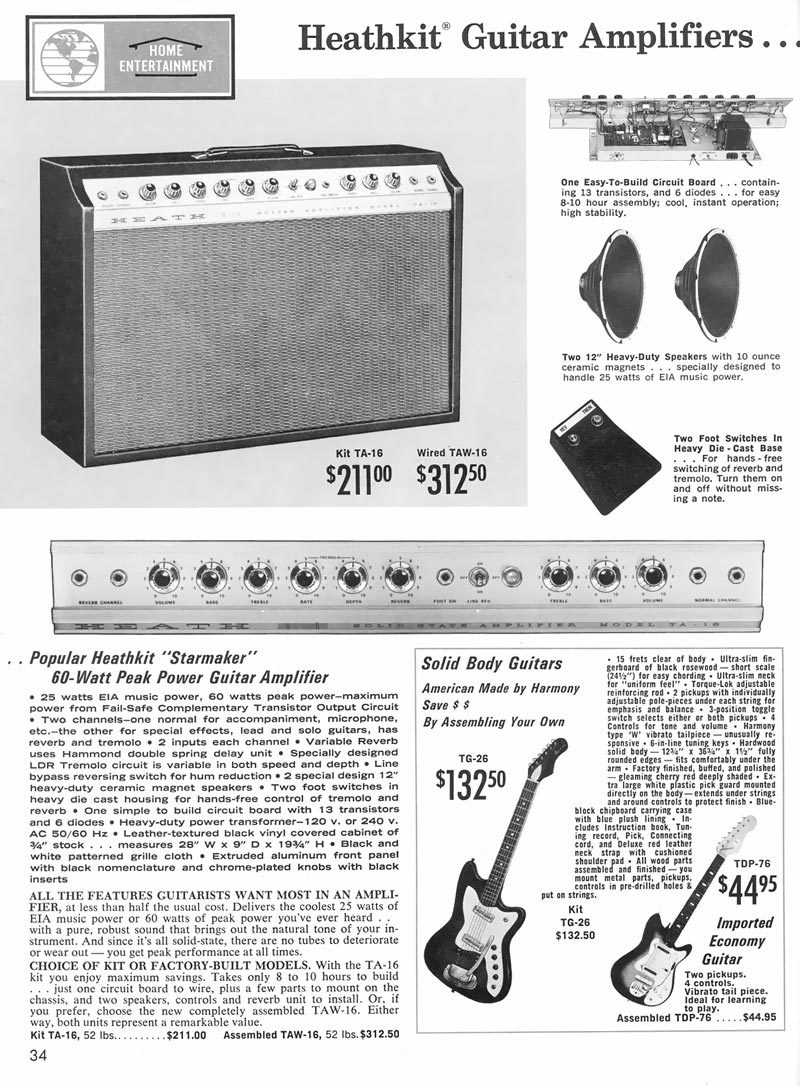
Depending on the purpose of the device, the user was free to choose one or another set. For example, there were sets for guitar amplification, music playback, in one or another set the power of UMZCH differed. The characteristics of the device do not make sense, since they differ depending on the specific model, while the overwhelming majority of authors agree that these amplifiers fully corresponded to the HI-fi class, and the Heathkit guitar combos competed with similar Fender and VOX models of that period.
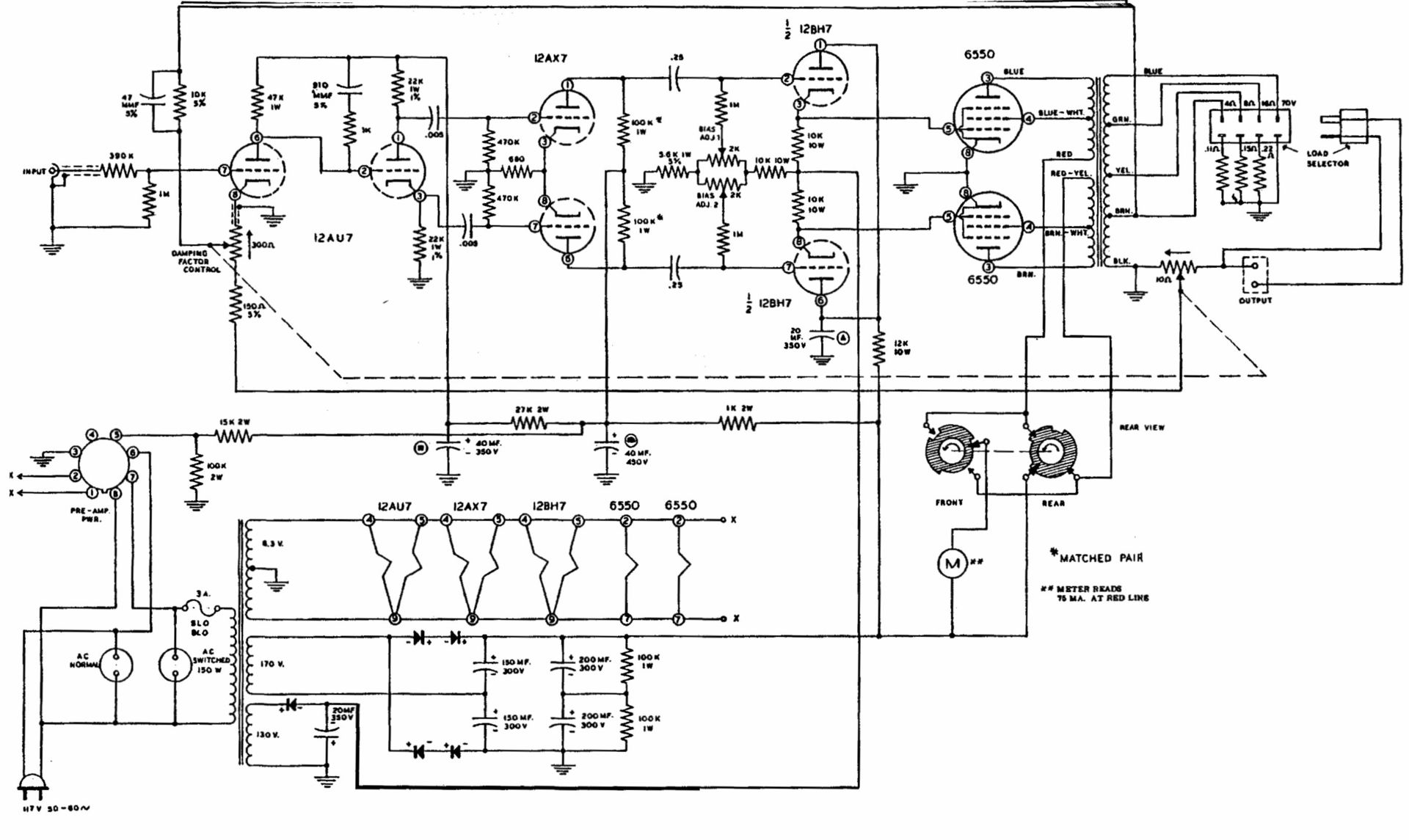
Legendary among engineers are class D amplifiers, attempts to create that began in the 50s. The very idea of the UMZCH with impulse control, output lamps is attributed to the 2nd authors, our compatriot Dmitry Vasilievich Ageev (1951) and Alec Reeves from the United Kingdom (1951). However, to say that the innovative concepts of bold engineers instantly became widely sought after in the market is not necessary.
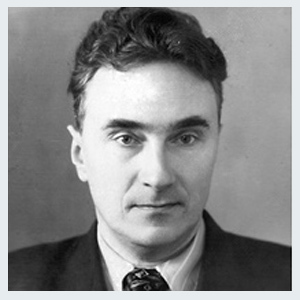
D.V. Ageev
The sudden era of transistors for attempting to create a good UHF class D did not lead to the expected results. The principle of inexhaustible efficiency, laid down by Soviet engineer Ageev and his British counterpart, has long been impregnable even for specialists from companies such as SONY, PHILIPS, Marantz, Matsusita Electric. Up until the 80s, nothing decent-sounding and commercially successful in class D could be created. The situation changed by the mid-80s, when MIS transistors appeared on the market for radio components.
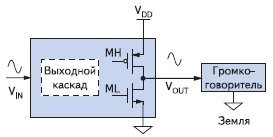
In spite of the limited popularity, the amplifiers of the D-class of that time cannot be called a super-mass product either. For the consumer, the concept of class D managed to lose its appeal by the end of the 80s, mainly due to the failures of their imperfect predecessors.
As Wikipedia narrates, the main problems of class D amplifiers were and, to some extent, remain:
Perhaps the most notable representative of the class D was one of the first digital amplifiers that fit the HI-FI performance - Tripath TA2020, which was launched in 1999. The fact is that, due to the inevitable need to eliminate distortion, the principle of analog modulation was unattractive.
Some engineers question the declared specifications of the Tripath TA2020 and their compliance with HI-FI standards. I suggest that readers themselves evaluate the quality indicators using the example of a 20 watt amplifier for a car based on the TA2020:

And all this happiness at a price of $ 20 to 60.
The microcircuit, on the basis of which the amplifier was created, was included in the list of “25 microcircuits that shook the world” according to the IEEE Spectrum magazine.

Tripath, which released an innovative amplifier, in order to draw attention to the product, even came up with a new class, declaring its device an amplifier of class T (although the principle of the device corresponded to class D).
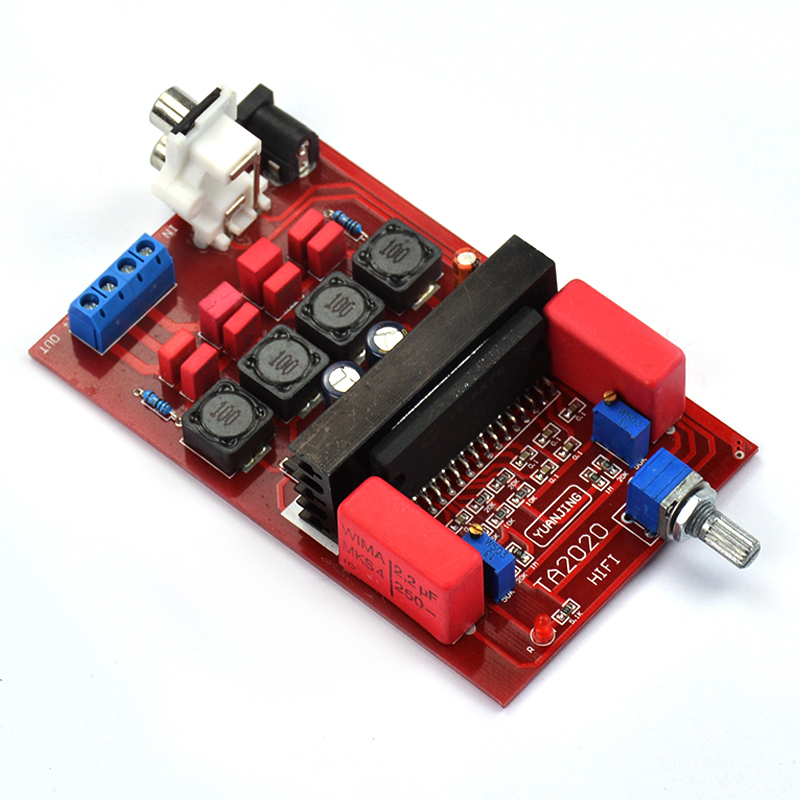
Despite the marketing efforts, the “creatives” with the classification, Tripath did not withstand competition with more powerful players and disappeared from the market in 2007. The inglorious and quiet end of this company does not detract from the merits of the developers who probably created the only truly legendary Class D amplifier.
Actually, this is all for now, sincerely I hope you like it. In this cycle we plan 2 more materials. Announce Mogolamp Highland Monsters, modern hybrid designs, and maybe a tale of the perfect amp.

When creating the material, I tried to squeeze all the information valuable from the masterpieces of audiophile journalism, dry technical descriptions and publications of such comrades as Neil Gader, Harry Pearson, Robert Green. As in the previous material, I tried to find the main characteristics and schematic diagrams of these devices, as well as prices (at the time of production), which modern authors are often silent about.
Futterman H3 OTL - you just need to throw away the output transformer
We begin traditionally with the warmest in terms of tube epoch, from the 50s in the USA, where in the provincial city of New York, inventor Julius Futterman (Julius Futterman) developed one of the most original tube amplifiers of his time. In 1954, the lamp UMZCH Futterman H3 OTL was born, a feature of which was the absence of an output transformer.

In the original circuit design of the Futterman amplifier, the phase inverter cathode resistor was connected not with ground, but with the amplifier output. The 100% OOS of the Futterman H3 OTL cathode follower was compensated for by a 100% PIC through the phase inverter cathode resistor. Interestingly, a scheme unique for that time (and highly appreciated by descendants) was developed not by a professional engineer, but by a self-taught radio amateur.
')
The reason for the need for the original solution was that about 30-35% of the cost of tube amplifiers of those years fell on the output transformer. That was an extremely significant factor, given that the first amplifiers were made by hand.

Thanks to the design solution, the price of the amplifier was slightly higher than the cost of self-assembly kits and amounted to about $ 180- $ 200, which today, taking into account inflation, is equivalent to $ 1,600 - 1,800. "Warm" color sound.

It should be noted that the comparatively low cost of the amplifier coexisted with almost unique characteristics of the time.
Judge for yourself:
- Frequency range: 7 Hz (!) Up to 55 kHz
- RMS: 90 W
- IMD: 0.1% (1 W, 1 ohm)
- Harmonic coefficient: 0.1%
- Output impedance: 0.6 ohm
Interestingly, the Quad ESL 57 electrostatic speakers created in 1957 were considered to be the ideal speaker system for working with this amplifier.

Futterman patented the device, and sold the licenses to several American companies in 1961. The license amplifiers according to the Futerman scheme were produced before the beginning of the 70s and were much more expensive than the original. During the 60s and 70s, the inventor improved circuit design of tube amplifiers.
In 1984, after Futerman's death, the New York Audio Labs company released, developed with his participation, one of the most expensive amplifiers of its time (for electrostatic speaker systems), costing $ 12,000 (about $ 26,000 today with inflation). Among the relatively recent developments that use Futtermann's legacy, we can single out the original device of the Italian Andrea Ziuffoli (the diagram is shown below).

Heathkit amps - DIY for music lover and musician
Heathkit - one of the foremost lamp designers for fans of rosin smoke. The company, founded in the 40s, gained popularity in the 60s, on a wave of interest in self-assembly of devices. Virtually all of the company's products have become iconic among DIY enthusiastic people. Unlike Dynaco, Heathkit created multipurpose designers, with different sets of chassis and radio components.

The kits and models were changed quite often, which also significantly discards these devices with the “mac for the poor.” The peak of popularity of Heathkit sets falls on the mid-60s, when the purchase of a high-quality amplifier assumed costs comparable to the cost of an average car.

All wooden parts (a set of handles, chassis, etc.) were included in the basic package. Guitar heathkit variants sometimes suggested the inclusion of additional bonuses: emitters and body parts for creating combos. Interestingly, the company actively used transistor circuits to create guitar kits. This approach was not very popular in the 60s (the warm tube trend in guitar amplification was strong), but it allowed buying cheap guitar equipment to rather low-end novice musicians.

Depending on the purpose of the device, the user was free to choose one or another set. For example, there were sets for guitar amplification, music playback, in one or another set the power of UMZCH differed. The characteristics of the device do not make sense, since they differ depending on the specific model, while the overwhelming majority of authors agree that these amplifiers fully corresponded to the HI-fi class, and the Heathkit guitar combos competed with similar Fender and VOX models of that period.

Class D: Efficiency vs distortion
Legendary among engineers are class D amplifiers, attempts to create that began in the 50s. The very idea of the UMZCH with impulse control, output lamps is attributed to the 2nd authors, our compatriot Dmitry Vasilievich Ageev (1951) and Alec Reeves from the United Kingdom (1951). However, to say that the innovative concepts of bold engineers instantly became widely sought after in the market is not necessary.

D.V. Ageev
The sudden era of transistors for attempting to create a good UHF class D did not lead to the expected results. The principle of inexhaustible efficiency, laid down by Soviet engineer Ageev and his British counterpart, has long been impregnable even for specialists from companies such as SONY, PHILIPS, Marantz, Matsusita Electric. Up until the 80s, nothing decent-sounding and commercially successful in class D could be created. The situation changed by the mid-80s, when MIS transistors appeared on the market for radio components.
It is known that in mode D the pulse acquires an almost rectangular shape, since the transistor is either locked or open. And the resistance of the open channel of modern power MPD transistors is quite small (from units to tens of millions of meters). Due to this, the class D amplifier built on the basis of these elements is capable of operating practically without power loss. The efficiency of such class D amplifiers is about 90 - 95%.

In spite of the limited popularity, the amplifiers of the D-class of that time cannot be called a super-mass product either. For the consumer, the concept of class D managed to lose its appeal by the end of the 80s, mainly due to the failures of their imperfect predecessors.
As Wikipedia narrates, the main problems of class D amplifiers were and, to some extent, remain:
... but it does not allow to achieve high quality sound reproduction, even if it is covered by its feedback. Class D nonlinear distortions have several reasons: the nonlinearity of the triangular signal generator, the nonlinearity of the inductors of the output filter, the nonlinearity due to the dead time between the switching on the upper and lower arms of the amplifier ...
Perhaps the most notable representative of the class D was one of the first digital amplifiers that fit the HI-FI performance - Tripath TA2020, which was launched in 1999. The fact is that, due to the inevitable need to eliminate distortion, the principle of analog modulation was unattractive.
In the early projects of class D amplifiers, low-frequency interference was freely transmitted from the supply bus to the output, which forced the use of non-linear modulation and delta-sigma modulation to eliminate them. The latter led to an inevitable increase in switching frequency and a decrease in efficiency. The logical solution was the use of digital circuits that reduce the switching frequency.
Some engineers question the declared specifications of the Tripath TA2020 and their compliance with HI-FI standards. I suggest that readers themselves evaluate the quality indicators using the example of a 20 watt amplifier for a car based on the TA2020:
- RMS: 2 x 20 W 4ohm, 2x12 W 8ohm
- Signal to Noise Ratio (SNR): 98db
- Dynamic range: 98db
- IMD: 0.1% 1 W, 4ohm
- THD: 0.03% 9 W, 4ohm, 0.1% - 10 W ohm, 0.1% - 6 W 8ohm, 10% - 23 W ohm, 10% 13 - W 8ohm
- Energy Efficiency: 81% 20 W, ohm, 88% 12 W, 8ohm
- Input sensitivity: 200mV
And all this happiness at a price of $ 20 to 60.
The microcircuit, on the basis of which the amplifier was created, was included in the list of “25 microcircuits that shook the world” according to the IEEE Spectrum magazine.

Tripath, which released an innovative amplifier, in order to draw attention to the product, even came up with a new class, declaring its device an amplifier of class T (although the principle of the device corresponded to class D).

Despite the marketing efforts, the “creatives” with the classification, Tripath did not withstand competition with more powerful players and disappeared from the market in 2007. The inglorious and quiet end of this company does not detract from the merits of the developers who probably created the only truly legendary Class D amplifier.
To be continued
Actually, this is all for now, sincerely I hope you like it. In this cycle we plan 2 more materials. Announce Mogolamp Highland Monsters, modern hybrid designs, and maybe a tale of the perfect amp.
Source: https://habr.com/ru/post/401431/
All Articles